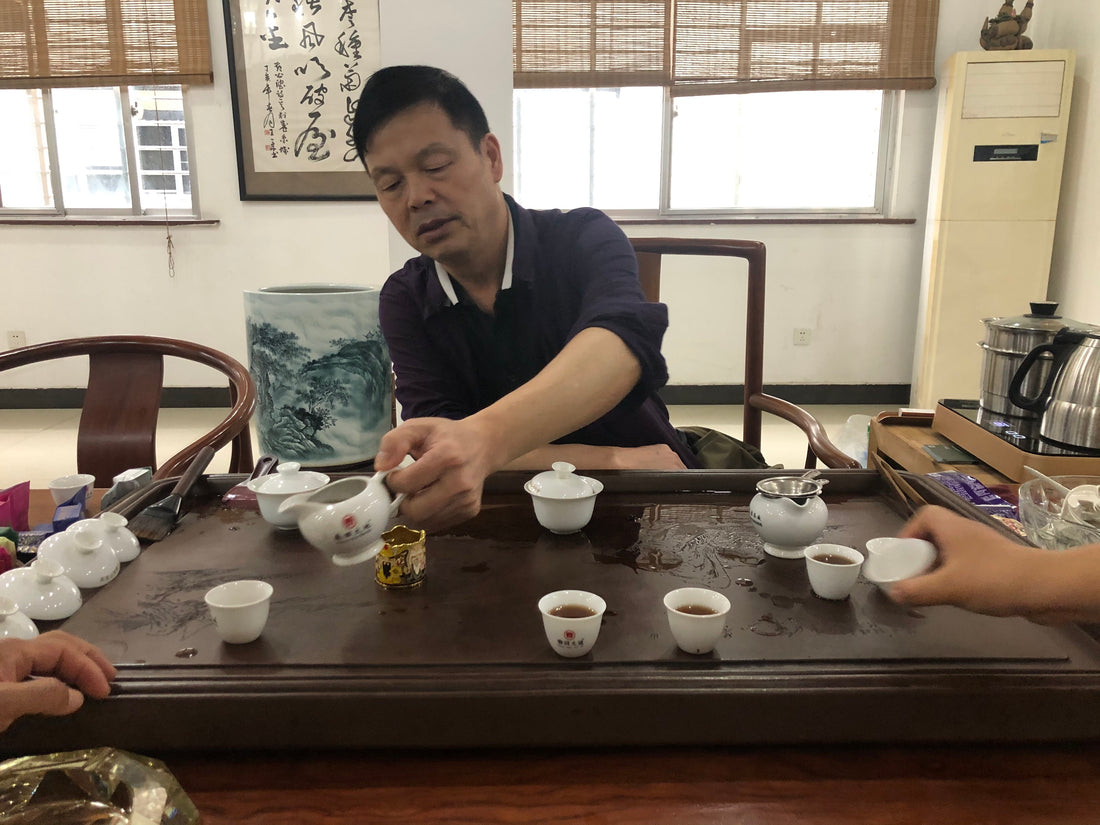
Introducing Wuyi Yancha Master Zhang Hui Chun(张回春)
In a market filled with green and over fragrant yancha, we've been searching for the past few years for Yancha producers who are continuing to make yancha in the traditional manner, with strong roasts and good oxidation. This type of processing requires a lot of skill since the risk of burning the leaves is high and the multiple roasts take the tea close to the edge. In the market the more fragrant, lighter roast teas are more immediately appealing to new tea drinkers but as drinkers' tastes evolve they inevitably graduate towards appreciating the clear tastes, depth and comfortable body feel of these stronger roasts. When we met Zhang Hui Chun and heard him talk about the lack of commercial interest in these teas, but his wish to continue this old style of processing and responsibility to keep producing these teas for his old customers we were curious and happy to try his teas.

As one of the original 12 Wuyi Da Hong Pao Heritage processors (now there are 18), he is well known in Wuyishan and among Chinese tea drinkers. He began his career after graduating from high school in 1975, learning to make tea and take care of the tea gardens of famous teacher Yau Yue Ming (姚月明), before opening his own factory Hui Chun Tea Factory in the 1990. Since 1992 they began collecting Wuyi aged tea and also storing tea to age themselves and now have a huge collection of aged teas.

He has built something of a reputation for himself for producing full roast teas and talks of the importance of changing the nature of the tea from cooling to warming, benefitting the tea drinker and their health in the long term. In the factory they have a rule about never selling the tea in the first year after processing, only releasing batches for sale once they have had a chance to rest for at least a year. This allows time for the roast to settle and become more comfortable and healthy for the body to accept. The roast flavours subside and the flavours of the tea begin to shine through. The aromas are more subtle and concentrated inside the tea liquid.
